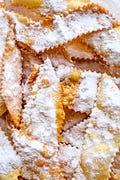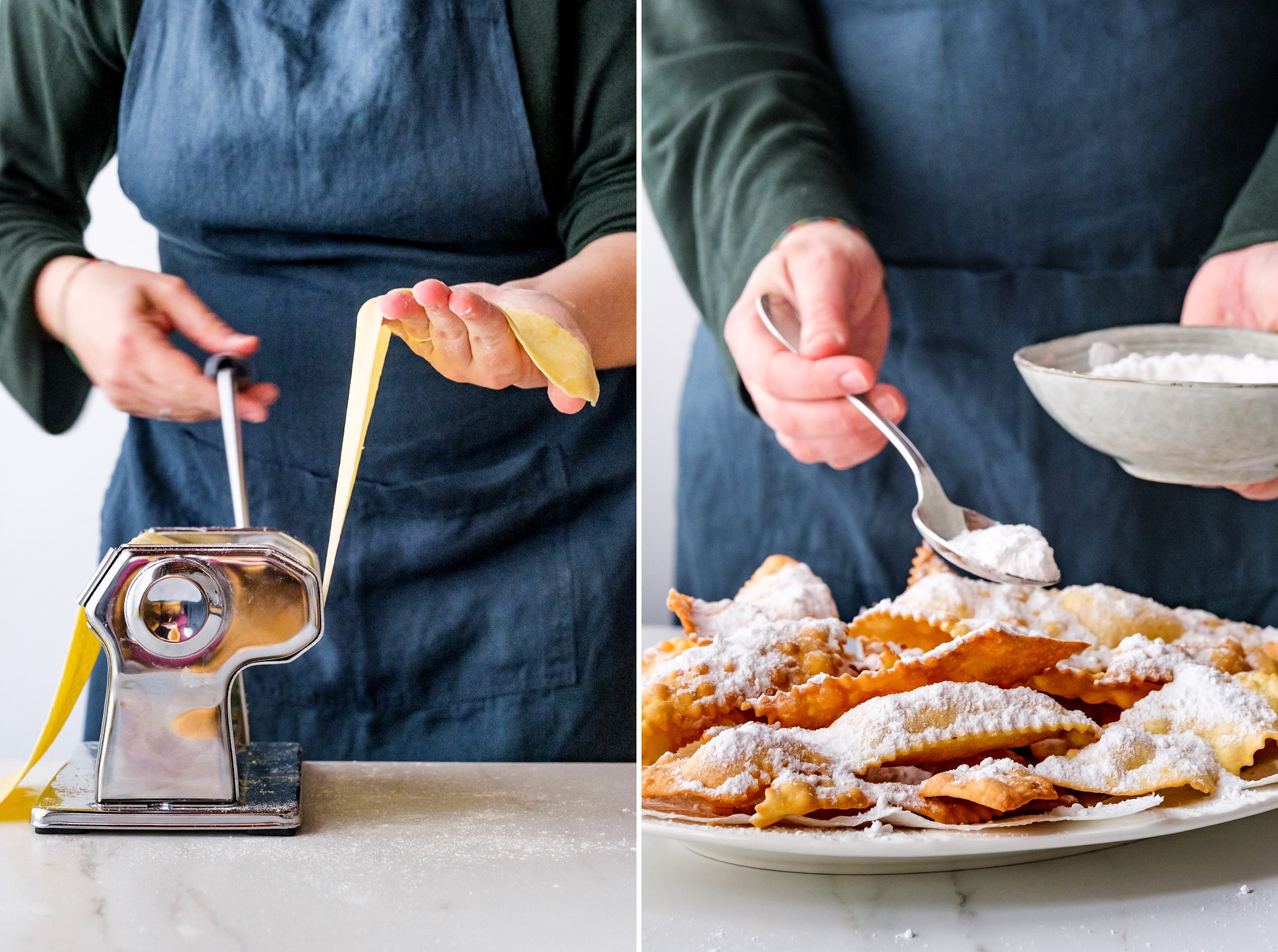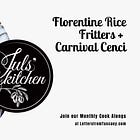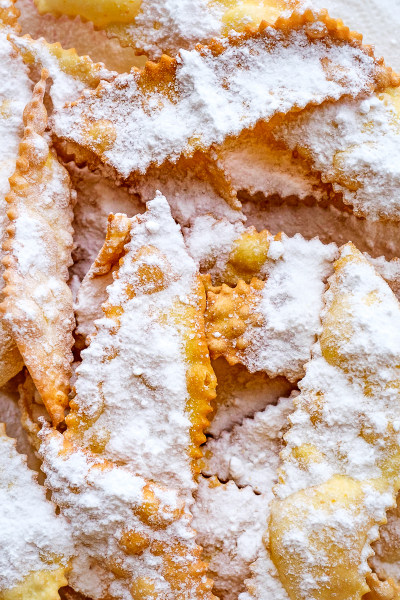The only thing I like about Carnival
Hint: it's fried and covered in powdered sugar
This is an exclusive recipe for the subscribers. It is part of a serialized Tuscan cookbook that you will receive over the course of one year, a collection of tested classic Tuscan recipes to add to your cooking repertoire. Learn more about the I Love Toscana project here and find all the recipes here. You can upgrade and get access to this, as well as all our monthly cook-along and live talks, on the link above.
If you're not a fan of Carnival, you're not alone. But before you dismiss it entirely, you might want to consider the sweet side of the season.
It took me a while to write this post, and the reason is that I do not like Carnival. I’ve always felt it was the last obstacle before Spring, longer days, flowers and strawberries, and the blooming countryside.
Carnival parades, more or less successful fancy dresses and colourful confetti that will sneak into your clothes worse than the sea sand into your swimming costume, well, they are really not my cup of tea. Though, it would be unfair to say that I do not like Carnival as a whole. Actually, there is something I appreciate, and it is usually fried and covered in powdered sugar.
Though, it would be unfair to say that I do not like Carnival as a whole. Actually, there is something I appreciate, and it is usually fried and covered in powdered sugar.
During Carnival, bakeries and pastry shops fill up their counters with heaps of crisp, feather-light cenci, the Tuscan fried dough scraps gently flavoured with orange zest and vinsanto, our sweet dessert wine.
You might know them by different names: lattughe, crostoli, galani, frappe, chiacchiere, bugie, intrigoni… they change the name from town to town, but what they have in common is the fact that they are fried (originally in pork fat, hence they were consumed for Carnival before the Lent fasting) and lavishly covered in sugar. How not to love them?
If you're ever in Tuscany during Carnival season, make sure to stop by a bakery or pastry shop and try some cenci. They might just change your mind about the season.
We made this recipe together during a Cook Along. You can watch the replay of it here:
RECIPE - Tuscan cenci
This is the recipe of our family Carnival cenci, but I’m pretty sure that every family in Italy has its own secret recipe, along with a special and different name for this carnival fried dough, since they are a real cross-cultural element.
Serves 8
250 grams/2 cups all-purpose flour, plus more for rolling out the dough
25 grams/2 tablespoons granulated sugar
25 grams/2 tablespoons butter, melted
2 eggs
30 ml/2 tablespoons vinsanto (or vodka, grappa, brandy…)
Zest of 1 organic orange
1 pinch fine sea salt
1 l/4¼ cups vegetable oil for frying
To serve
2 tablespoons powdered sugar
2 tablespoons granulated sugar
Pour the flour on a pastry board or on a large working surface, make a well in the centre and add all the other ingredients.
Knead all the ingredients with your hands, as if to make homemade pasta. Knead it for at least 10 minutes, until the dough becomes very elastic and smooth, and it no longer sticks to your hands. Let the dough rest for about 30 minutes, wrapped in a kitchen towel or covered with a bowl.
Roll out the dough with a rolling pin or with the pasta machine to make long and paper-thin sheets of pasta, about 1 or 2 mm thick, so that the cenci will be feather-light when fried. Use a tiny amount of flour to help to roll out the dough, but try to dust it off or shake it off from the cenci, because it will be the first thing to burn in the hot frying oil, giving an unpleasant burnt flour taste to cenci.
Cut the pasta sheets with a knife or a wheel in strips about a span long and 3 inches in width.
Heat the vegetable oil in a large pan and when it reaches 175°C/350°F on a cooking thermometer, deep fry the cenci.
If you don't have a cooking thermometer, use some dough scraps to check when the oil is ready: dip a scrap in the oil. It will be hot enough when many tiny bubbles immediately surround the piece of dough.
Fry the cenci in batches for about 15 to 20 seconds per side, checking them often and turning them with frying tongs.
Carefully remove the cenci from the oil and drain them for a few minutes on a tray lined with kitchen paper.
Mix powdered sugar and granulated sugar in a bowl, then generously dust the cenci. They are delicious when still warm, but you will be able to detect all the flavours and aromas just when cold.
Tips for feather-light cenci
Do not skip the alcohol, it evaporates while frying and works as a leavening agent. Choose your favourite one, or the one you have in your pantry. For me it is vinsanto, the Tuscan sweet wine, but it could be vodka, grappa, brandy…
When you roll out the dough in the pasta machine, fold your sheet of dough on itself multiple times and feed it again and again through the machine: layering the dough ensures a light, crisp texture.
And here you can have a look at a short video we filmed yesterday while making cenci!
If you need to print this recipe to keep it in your kitchen and use for scribbling down your notes, you find the printable PDF below and you can print just odd pages to avoid photos and save ink.
If you make this recipe, share it via email and send me a picture at juls@julskitchen.com, or on Social Media using the hashtags #myseasonaltable #julskitchen and #lettersfromtuscany, and tag @julskitchen








Cenci on New Year's Eve for my family. We zig zagged runny flower honey over the great Meissen platter of cenci then lightly dusted with icing sugar. Heaven. Quite a knack, ma Tutto fatto in casa, da me